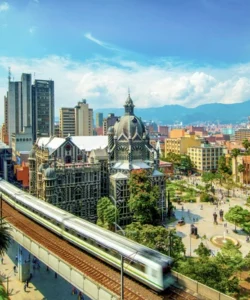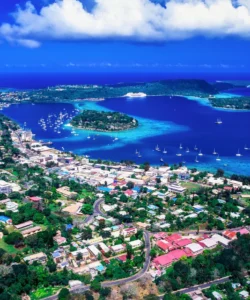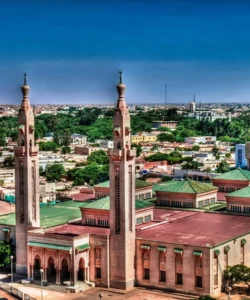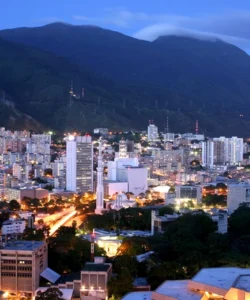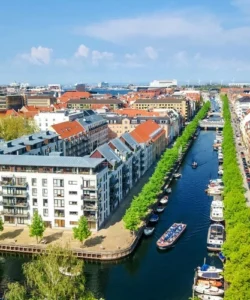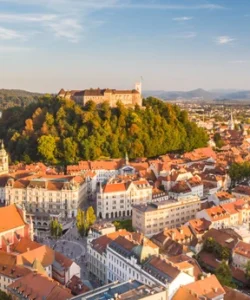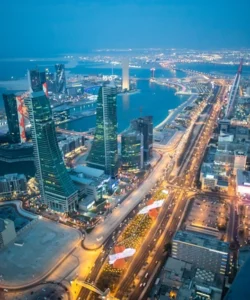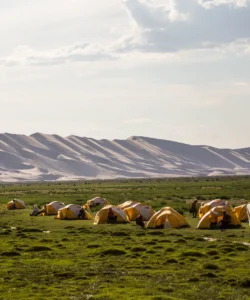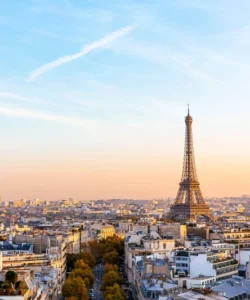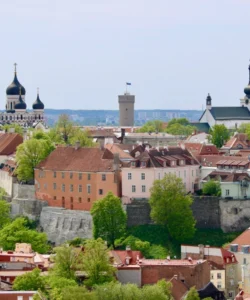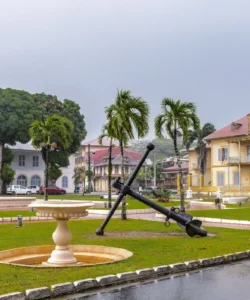Da Nang (Đà Nẵng) is Vietnam’s third-largest city and a vibrant, rapidly developing coastal hub in Central Vietnam. Strategically located on the South China Sea, it boasts long stretches of beautiful beaches, impressive mountains, and serves as an ideal base for exploring nearby UNESCO World Heritage sites like Hoi An Ancient Town and the My Son Sanctuary. Transformed from a war-era port into a modern, tourist-friendly destination, Da Nang blends urban sophistication with natural beauty and easy access to historical treasures.
![]()
Name: Da Nang (Đà Nẵng)
Address: Da Nang City, Vietnam. Key areas include the beachfront (My Khe Beach), the Han River area, and the city center.
How to get there:
Da Nang is a major transport hub and easily accessible:
- By Air: Da Nang International Airport (DAD) is a major airport with numerous direct domestic flights from Hanoi, Ho Chi Minh City, and other Vietnamese cities. It also has a growing number of direct international flights from various Asian cities (e.g., Seoul, Busan, Bangkok, Singapore, Kuala Lumpur, Hong Kong, Taipei), making it a popular entry point for international travelers.
- By Train: The Da Nang Railway Station is a major stop on Vietnam’s “Reunification Express” railway line, connecting it to Hanoi in the north and Ho Chi Minh City in the south. The scenic journey over the Hai Van Pass (to/from Hue) is particularly famous.
- By Bus: Intercity buses connect Da Nang to almost all major cities and provinces in Vietnam.
- By Car/Taxi/Ride-hailing: Da Nang is easily accessible by road from nearby cities like Hue (via Hai Van Pass or tunnel) and Hoi An. Taxis and ride-hailing services (Grab) are abundant within the city.
- By Cruise: Da Nang is increasingly a port of call for international cruise ships.
Landscape and Architecture:
Da Nang’s landscape is a captivating mix of coastal plains, mountains, and modern urban development:
- Extensive Beaches: The city boasts long, wide stretches of beautiful sandy beaches, most notably My Khe Beach, often cited as one of the world’s most attractive beaches. These beaches are lined with resorts, hotels, and seafood restaurants.
- Son Tra Peninsula (Monkey Mountain): This prominent peninsula juts into the sea north of the city, featuring lush forests, winding roads, and stunning viewpoints. It’s home to rare red-shanked douc langurs.
- Linh Ung Pagoda: Located on Son Tra Peninsula, famous for its towering 67-meter-tall white marble statue of the Goddess of Mercy (Guanyin), which overlooks the city and the sea. The pagoda itself features traditional Vietnamese Buddhist architecture.
- Marble Mountains (Ngũ Hành Sơn): A cluster of five limestone and marble hills (named after the five elements: metal, wood, water, fire, earth) located south of the city. These mountains are dotted with caves, grottoes, pagodas, and shrines, carved into the rock, offering spiritual exploration and panoramic views.
- Han River: The Han River flows through the city, with a series of distinct and often illuminated bridges connecting the two sides.
- Dragon Bridge (Cầu Rồng): Da Nang’s most iconic bridge, shaped like a dragon, famous for its weekend fire- and water-breathing show. It’s a modern architectural marvel.
- Han River Bridge (Cầu Sông Hàn): Vietnam’s first swing bridge, which rotates horizontally to allow ships to pass.
- Golden Bridge (Cầu Vàng) / Hands of God Bridge: While not directly in Da Nang city, this globally famous pedestrian bridge with giant stone hands holding it up is located in the nearby Ba Na Hills SunWorld Resort (in the mountains west of Da Nang) and is a massive draw for visitors to the region, heavily associated with Da Nang tourism.
- Modern Urban Architecture: Da Nang’s rapid development is reflected in its contemporary high-rise hotels, apartment buildings, and commercial centers along the beachfront and Han River.
What makes it famous:
Da Nang is famous for:
- Beautiful Beaches: My Khe Beach and other stretches of sand offer excellent opportunities for swimming, sunbathing, and water sports.
- Gateway to Central Vietnam’s UNESCO Sites: Its strategic location makes it the perfect base for visiting Hoi An Ancient Town (a UNESCO World Heritage site, 30km south), My Son Sanctuary (a UNESCO World Heritage site of ancient Cham ruins, 70km southwest), and Hue Imperial City (a UNESCO World Heritage site, 100km north).
- Iconic Bridges: The Dragon Bridge and Han River Bridge are architectural landmarks that illuminate the city’s nights and contribute to its modern identity.
- Linh Ung Pagoda & Marble Mountains: Offer both spiritual retreats and stunning natural beauty with panoramic views.
- Golden Bridge (Ba Na Hills): Although not in the city center, this unique bridge has gained immense international fame and is a major draw for tourists visiting the Da Nang area.
- Rapid Development and Tourism Boom: Da Nang has emerged as a shining example of Vietnam’s economic growth and burgeoning tourism industry, known for its clean environment and modern infrastructure.
- Food Scene: A vibrant culinary scene, especially for fresh seafood, reflecting its coastal location.
Differences from some other wonders:
Da Nang, as a city and a destination, offers a unique blend of features that differentiate it from other wonders:
- Modern Coastal City as a Hub for Heritage: Unlike purely historical cities (e.g., Hoi An, Hue) or purely natural wonders, Da Nang is a modern, dynamic coastal city that functions as a highly efficient and convenient hub for exploring multiple, distinct UNESCO World Heritage Sites nearby. It offers the comforts of a contemporary city alongside easy access to ancient history.
- Signature Bridges as Urban Icons: While many cities have bridges, Da Nang’s focus on architecturally distinctive and interactive bridges (like the fire/water breathing Dragon Bridge or the swinging Han River Bridge) as central urban landmarks sets it apart and makes its cityscape uniquely recognizable at night.
- Integration of Beach, Mountain, and City: It uniquely combines long, accessible urban beaches, dramatic mountains (Son Tra, Marble Mountains) within or immediately adjacent to the city, and a modern urban center. This immediate blend of natural landscapes and city life is a significant draw.
- Rapid Transformation: Its relatively recent and rapid transformation from a more industrial/military port into a major international tourist destination is a defining characteristic of its modern identity, showcasing aggressive urban and tourism planning.
- Golden Bridge (Nearby) as an Unconventional Landmark: The globally viral Golden Bridge (part of Ba Na Hills) is an example of highly innovative and visually unconventional tourist architecture associated with Da Nang that has captured international imagination, contrasting with more traditional landmarks.
In essence, Da Nang is a dynamic and multifaceted wonder, a bustling coastal metropolis that serves as a perfect blend of modern urban charm, stunning natural beauty, and a convenient gateway to the rich historical and cultural tapestry of Central Vietnam.

